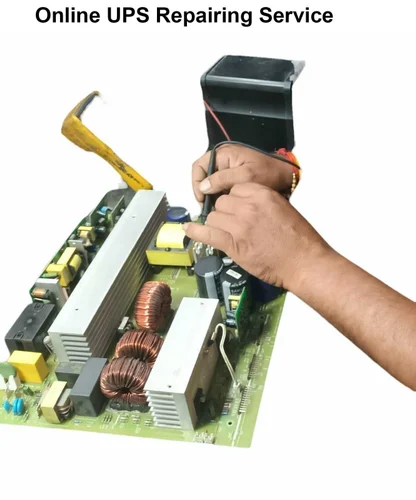The Vertiv 30 kVA UPS (Uninterruptible Power Supply) is designed to provide reliable power protection for critical applications in various environments, such as data centers, telecommunications, and industrial settings. Here’s a comprehensive overview of its features, specifications, and benefits: Vertiv 30 kVA UPS Overview Key Features Power Capacity: 30 kVA output, suitable for medium-sized systems. Topologies: Typically available in both online double-conversion and line-interactive designs, ensuring maximum protection against power disturbances. High Efficiency: Energy-efficient operation, often with advanced features to minimize energy consumption, especially in low-load scenarios. Modular Design: Some models may offer a modular design for easy scalability, allowing for future expansions without significant infrastructure changes. Flexible Input and Output Options: Compatible with various input voltages and offers different output configurations to accommodate various loads. Advanced Battery Management: Features for optimizing battery performance, including temperature monitoring, equalization charging, and predictive diagnostics. User-Friendly Interface: LCD or LED display for easy monitoring of status, battery health, and load levels. Network Management Capabilities: Integration with network management systems for remote monitoring and control, often through SNMP or web interfaces. Parallel Operation: Capability to operate multiple units in parallel for increased redundancy and capacity. Specifications (Typical) Input Voltage: 380/400/415 V (Three-phase) Output Voltage: 380/400/415 V (Three-phase) Output Frequency: 50/60 Hz (Auto-sensing) Efficiency: Up to 95% or higher in online mode. Form Factor: Tower or rack-mounted options depending on the model. Batteries: Lead-acid or lithium-ion options depending on configuration. Benefits Reliability: Ensures continuous power supply and protects against all power disturbances. Scalability: Easily add capacity as your needs grow, especially with modular options. Cost Savings: High efficiency reduces energy costs, and predictive maintenance can prevent costly downtime. Enhanced Performance: Maintains stable output voltage and frequency, protecting sensitive equipment. Remote Monitoring: Allows for proactive management and maintenance, minimizing potential issues. Maintenance and Support Annual Maintenance Contracts (AMC): Regular inspections, preventive maintenance, and emergency support can help ensure optimal performance and reliability. Battery Replacement: Scheduled battery replacements as per usage and manufacturer guidelines are crucial for longevity and performance. Conclusion The Vertiv 30 kVA UPS is a robust solution for critical power needs, combining efficiency, reliability, and advanced management features. Whether for a data center, telecommunications, or other mission-critical applications, it provides essential protection against power interruptions. If you need specific model numbers, configuration options, or pricing information, let me know!
Send Message







